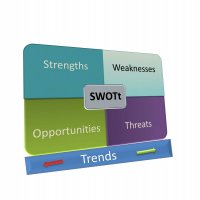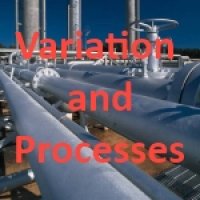The following is a list of reports that results from completing a single questionnaire that assesses over 170 traits with an average completion time of just over 20 minutes:
The Developing Position Traits report identifies the two traits that would be most valuable to develop for an individual in relationship to a selected position. It provides a development plan for each of the traits. The traits are selected according to the two traits that would have the greatest positive impact on success if they were developed. The person’s lowest traits are not necessarily selected as they may not have as much impact on performance for that position.
The Developing Success Traits Report enables you to get a practical development plan for any of the traits listed for an individual independent of any position. There is a drop-down list below the Development by Trait report label enabling you to select the trait for which you want to develop.
The Paradox Graph Report provides a graphical view of the person’s behavior relative to each of the paradoxical traits. The Paradox portrayal enables you to understand the person’s behavior under normal conditions as well as under stress conditions. It is a unique way to understand the human psyche based on this key proven psychological concept. The 12 paradoxes are: Certain and Open, Analytical and Intuitive, Authoritative and Collaborative, Persistent and Experimenting, Frankness and Diplomacy, Assertiveness and Helpfulness, Self-Motivated and Stress Management, Warmth and Enforcing, Self-Accepting and Self Improvement, Optimistic and Analyzes Pitfalls, Risking and Analyzing Pitfalls, and Flexible and Organized.
The Paradox Narrative provides a detailed explanation of each paradox and the individual’s scores related to that paradox. This gives an in-depth dynamic understanding of the person’s behavioral tendencies. The Paradox portrayal enables you to understand the person’s behavior under normal conditions as well as under stress conditions. It is a unique way to understand the human psyche based on this key proven psychological concept.
The Traits and Definitions report lists the person’s scores on each trait and gives definition of each trait. This enables you to see a hierarchy of the candidate’s tendencies and provides a clear definition of each trait. The traits are listed in categories including basic traits, HATS preferences, work environment preferences, interests, behavioral competencies and traits to avoid. Each category of traits lists the related traits from the strongest trait of that person to the weakest trait.
The Summary and Keywords report provides key single words that describe the individual. The keywords are divided into three columns: Strongest Traits, Strong Traits and Fairly Strong Traits. The Strongest Traits are traits that the person scores 10 out of 10 or 2 or less out of 10. This indicates that the trait is extreme and thus will be the person’s strongest characteristic. Strong Traits are traits in which the person scores 9 out of 10 or 3 out of 10, indicating the traits will be strong due to its presence or absence. Fairly Strong Traits are traits in which the person scores 8 out of 10 or 4 out of 10, indicating the trait will be fairly strong due to its presence or important due to its absence. The Summary Descriptions provides narrative paragraphs that describe the person’s behavior further.
The Main Graph report shows the individual scores on the main traits using graphical representations. The Main Graph is used to gain deeper insight into the person by enabling the interpreter to see a complete system of traits. By studying this graphical system, the interpreter can learn to understand the interrelationship between traits. The report is organized into nine Quadrants. In each Quadrant there are four traits, one on each side of a quadrant. Two days training is required to effectively begin to interpret the Main Graph.
The Main Graph Interpretation Report provides an interpretation of all the items on the Main Graph.
This reports focus on eight areas related to engagement and retention. It identifies candidate expectations as well as behaviors that relate to the shared responsibility of achieving those expectations. The report can be used in the coaching process to ensure alignment of the employee’s expectations, passions, and motivators are with the organization’s needs and work environment. It also looks at the to engagement factors for each person and relates a fulfillment score. This is used for improving engagement, management effectiveness, assessing candidates and in development.
















